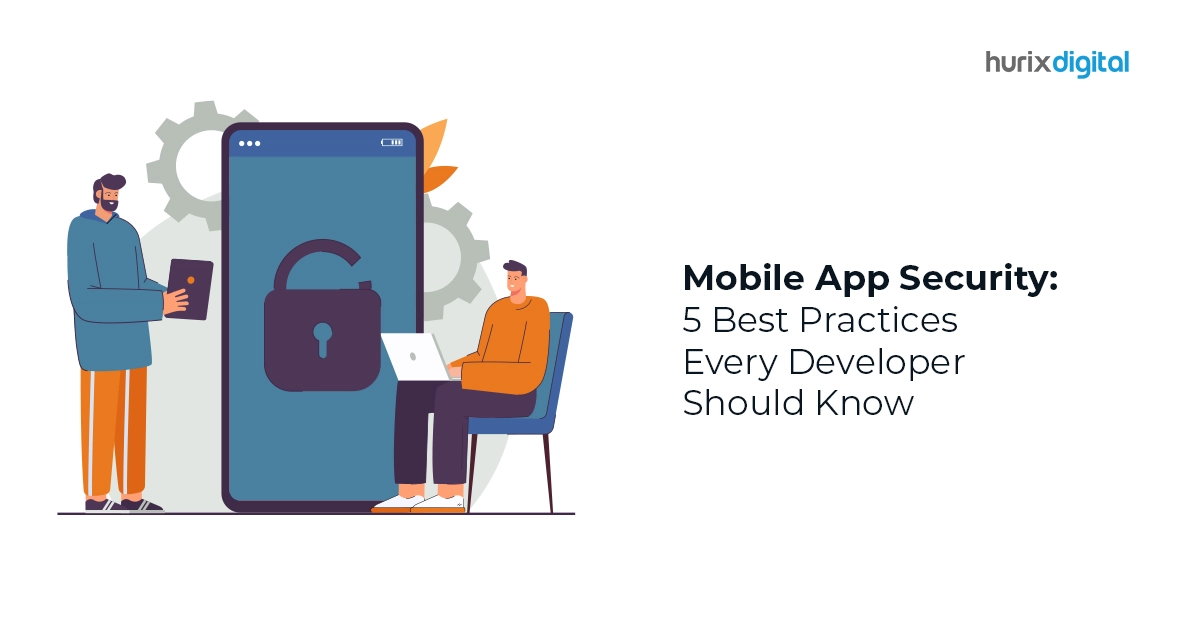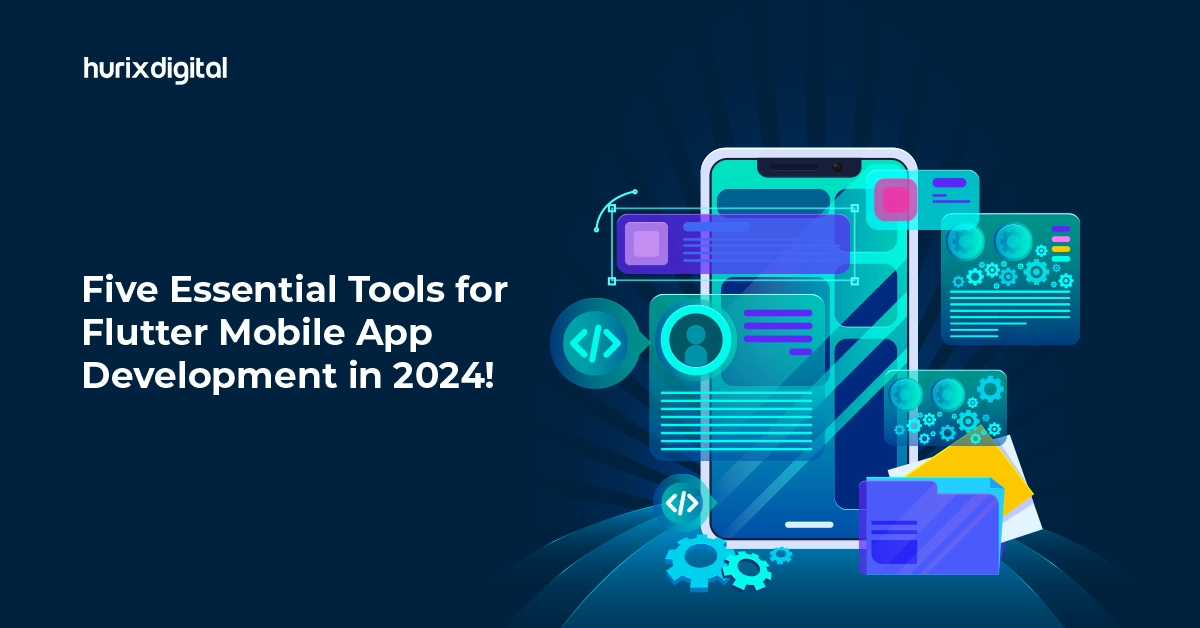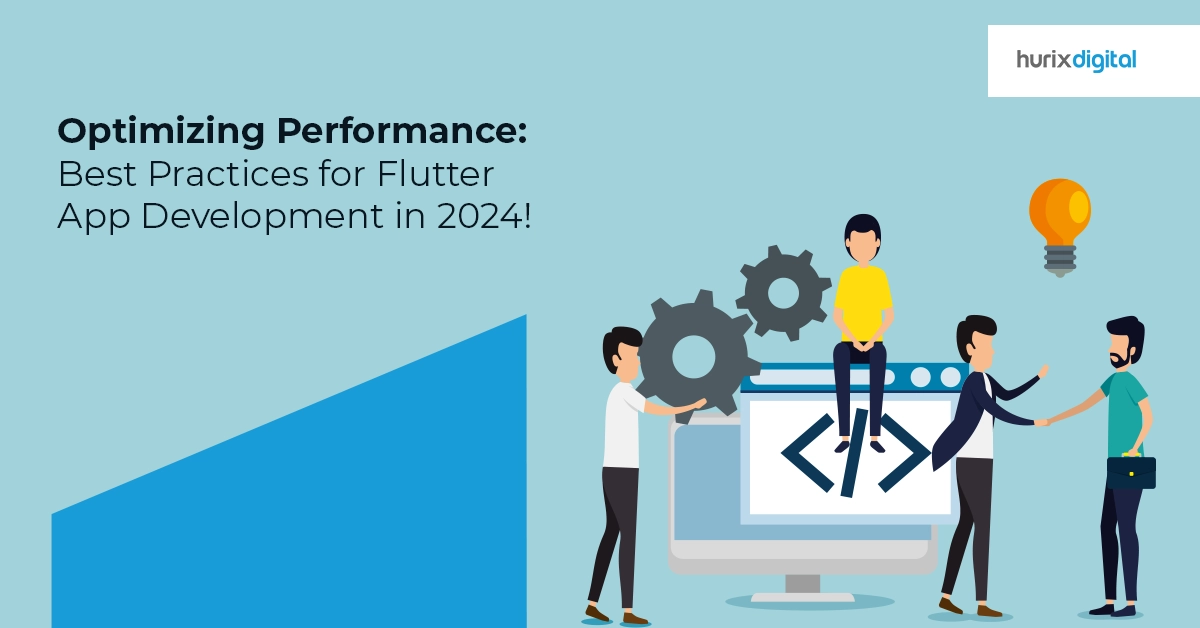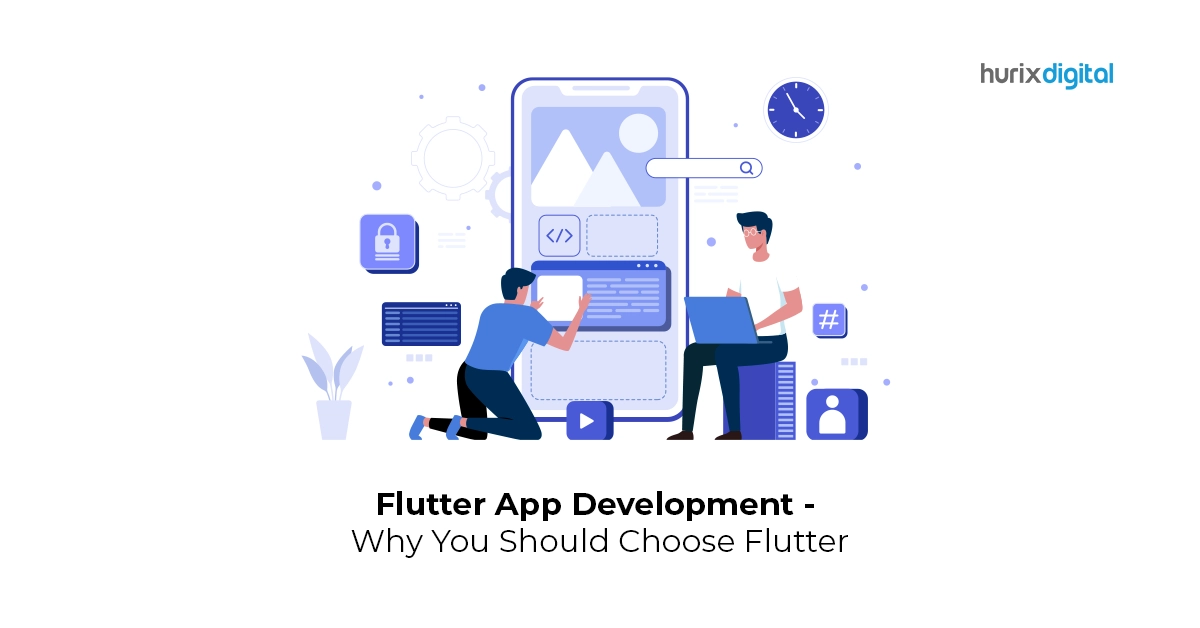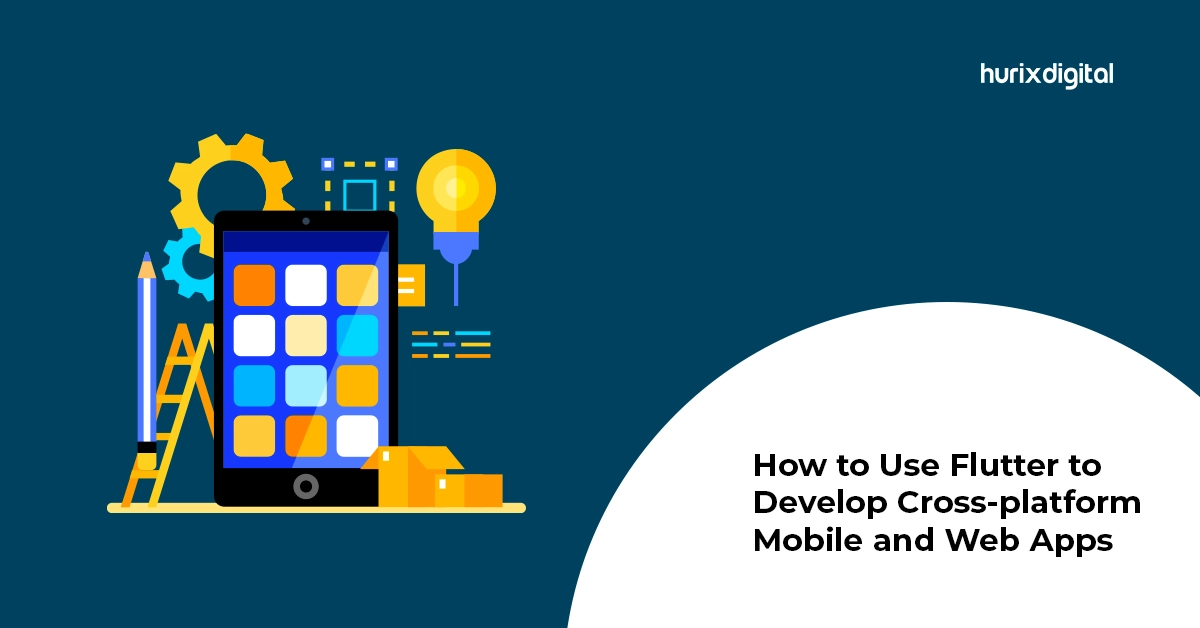
How to Use Flutter to Develop Cross-Platform Mobile and Web Apps?
Summary
This article outlines all the features and benefits of Flutter app development. We hope you enjoyed it and can now use Flutter to create cross-platform mobile and web apps with ease!
One of the most quickly evolving methods of building cross-platform apps is using Flutter. This is evident as Flutter holds a 0.98% market share in the application development industry and is competing with 162 other technologies in the field of app development.
If you are wondering how to use Flutter app development seamlessly to create cross-platform mobile and web apps, we have got you covered!
This article outlines a comprehensive step-by-step guide on how to use Flutter app development, its benefits, features, and more. Let’s dive in!
Table of Contents:
- What is Flutter in App Development?
- Which Language is Used in Flutter?
- How to Build a Cross-Platform App With Flutter?
- Why Choose Flutter for Cross-Platform App Development?
- Takeaway
What is Flutter in App Development?
Flutter is a software development kit (SDK) for creating high-fidelity, high-performing apps for iOS and Android mobile devices. The Flutter platform comes with robust animation and graphics APIs that make it simple to create user experiences that respond to interactions with fluidity.
Based on the Dart programming language, Flutter offers an intuitive development process that includes hot reloading, allowing you to loop over your code rapidly.
Some of the Flutter app development best features are the following:
- Dart: The programming language used by Flutter is called Dart, and it’s simple to grasp and gives you the ability to create excellent apps.
- Hot reload: You can swiftly and simply make modifications to your app without having to restart it, thanks to Flutter’s “hot reload” functionality.
- Interactive and adaptable UI: Flutter offers you an expressive and adaptable approach to developing stunning apps by utilizing the same design concepts as Google’s Material design principles in the development of its UI parts.
- Native functionality: You get the highest feasible performance on both iOS and Android with Flutter apps since they are assembled into native code.
- Open source: Flutter is a project that is freely accessible, so you can offer input to the platform’s growth and utilize it for free.
Which Language is Used in Flutter?
Dart is the technology that forms the basis of Flutter app development. It’s an object-oriented programming language created by Google that is client-optimized. Dart can compile into JavaScript and native code for desktop and mobile platforms.
It doesn’t need an extra gateway to interact with the platform like, say, ReactNative because of this direct compiling. This enhances the app’s efficiency in general and starting time.
Also Read: What is Mobile Application Development? A Comprehensive Overview
How to Build a Cross-Platform App With Flutter?
Rather than jumping right into a high-level overview of Flutter app development, we’ll give you a straightforward walkthrough on how to start building a basic, working app on Flutter.
1. Install the Flutter App on Your Android or IOS Device
The first step in creating a cross-platform Flutter application for the iOS and Android platforms is to ensure that the following elements are installed on your device:
- Android Studio
- Xcode
Although there are a few different ways to install Flutter app development services on your computer, downloading the installer from Github or the official Flutter website is the quickest and most straightforward way to get going.
2. Build a Project Using Flutter
The following step is to use Flutter to develop a project after installing the SDK and tools. Ensure that the project name is lowercase and utilize underscores.
Follow these steps sequentially:
- After creating the projects, select the Flutter Application from the four choices that appear in your window.
- You may enter more fields while you navigate to the next screen, including package title, company field, and more. Rest assured that if you do not have a domain, you may use any details here.
- Click Androidx.* artifacts next! By selecting this option, you are essentially choosing to use Android Jetpack, which is a full package of archives, tools, and instructions designed to help developers create sophisticated applications with ease.
- Developers are strongly encouraged to use Androidx while developing a new application with Flutter. You can use a lot of native app development Android features thanks to it.
- The next decision you have to make is whether to use Swift or Kotlin support. Alternatively, you might decide to stick with the Flutter SDK.
- After selecting your preferred option, click the “Finish” button and patiently wait for Android Studio to prepare the project.
3. Run Your Application for Mobile or Web
You have installed the fundamental app on both the iOS and Android platforms in your Android Studio. Verify that your actual phone is linked to the computer or that developers have built an emulator for evaluating the app before you begin using your project.
Even though we mostly use Flutter to construct cross-platform applications, this framework may also be used to create web applications. Hence, all you have to do to develop a web application is adhere to the same easy procedures that you would for a mobile application.
Why Choose Flutter for Cross-Platform App Development?
What makes Flutter cross-platform development unique, inventive, and just plain well-executed?
Here are some key Flutter benefits you need to know:
1. Native-like Performance
This is by far the most notable benefit of using Flutter. Skia is a graphics engine that Flutter uses to facilitate efficient and fast development. Because it does not depend on interpreters or intermediate code depictions, it is also identical to native apps.
2. One Codebase for All Platforms
When working on iOS and Android devices, distinct codebases do not need to be created.
With Flutter, creators can generate one source code base that can be used for multiple platforms, including desktop, mobile, and the web. This saves money and leads to a faster app launch.
3. Enhanced Time-to-Market Speed
Compared to previous development frameworks, the Flutter framework is more flexible. One of the main benefits of this tool is its short time-to-market.
Most of the time, it is hard to tell whether the iOS or Android versions will be ready to deliver the product on schedule. Flutter comes into play here since it makes cross-platform usage possible.
4. Custom Rendering Engine
One issue with certain cross-platform apps is their striking resemblance to iOS and Android apps. Given it comprises packages containing a set of distinct widgets suitable for both operating systems, Flutter is the ideal choice in this regard.
5. Shorter Development Time
Developing a Flutter application requires far fewer resources. The fact that there are no extra maintenance costs is a benefit. Larger apps with special features can be made with Flutter.
Also Read: Different Types of Mobile Applications: Native, Hybrid & Web Apps
Takeaway
While creating apps, developers are still deciding on whether to use the relatively new Flutter framework.
However, Flutter app development companies have emerged as a popular option, winning over software professionals at a never-before-seen pace. Compared to its closest rivals, Flutter app development is easier to use, more affordable, and offers an intuitive user interface.
If you are looking for professional options to help you develop cross-platform apps, get in touch with Hurix Digital. We handle every part of the app development process, from conception to the very end of delivery, and guarantee the creation of top-notch mobile apps that meet your needs.
Through the years, we have designed and implemented highly user-driven and accessible mobile applications for both internal businesses and our clients. This has given us a greater understanding of the various use cases and needs.
Book a 15 minutes discovery call to understand more about flutter and other innovative mobile application solutions from Hurix.

Vice President – Digital Content Transformation. He is PMP, CSM, and CPACC certified and has 20+ years of experience in Project Management, Delivery Management, and managing the Offshore Development Centre (ODC).
